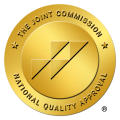Preparing Your Treatment Center for the Next Pandemic
This post explores the best strategies for preparing for pandemics and how your treatment center and its patients can survive a possible next crisis.
Article Contents
How to Prepare for the Next Pandemic?
Almost every country worldwide responded to the COVID-19 pandemic by implementing lockdowns and social distancing measures. As these new measures were introduced, the levels of loneliness, depression, harmful alcohol and drug use, and self-harm or suicidal behavior also rose. If a similar situation happens in the future, treatment centers must be prepared for a pandemic and understand how to provide care to these patients while also maintaining proper safety precautions.
Always Ready
The COVID-19 epidemic has shown that the US has skilled and dedicated health care providers, researchers, and facilities. However, the high rate of death due to COVID-19 has also shown that the US healthcare system was greatly unprepared to offer equal care to the surge of COVID patients. The key to surviving the next pandemic lies in calmly assessing your response plan and improving readiness for future pandemic shocks.
Always Prepared
There is an estimated 100 nonillion viruses on our planet. In other words, there are enough viruses to assign one virus to every star that exists in the universe 100 million times over. These facts compel the science world to acknowledge the fact that there will always be another pandemic.1
It is just how nature works. There will always be viruses that mutate to become more infectious to human hosts or make existing drug treatments ineffective. Acknowledging this fact is one of the most crucial steps towards preparing for the next pandemic and saving lives.
Rethinking Financial Model
Before the pandemic, addiction treatment was a growing industry, with 15,000 providers, $42 billion yearly revenue, and a projected 5.2% annual growth. By summer 2020, the addiction treatment industry had lost $4 billion in revenue and 1,000 providers. Around 54% of organizations have closed their programs and 65% had to turn away patients.2
At the same time, the need for addiction treatment has increased, with treatment centers reporting a 50% increase in the demand for their services.
To make treatment safe, some centers introduced virtual therapy, which has been a viable alternative to in-house treatment without making large investments. Patients could meet one-on-one with a therapist who conducts a telehealth session. Some treatment centers can also provide online group meetings with strict privacy procedures.
While most treatment centers have been negatively affected, there is one specific group of rehabs that has done well: high-end services. These rehab centers have luxurious amenities and house fewer patients, making it easier to deal with exposure to COVID-19.
Treatment centers that can survive the crisis might be able to absorb the ones struggling financially, leading to a consolidation of actors in the industry. Considering the high demand for addiction treatment services, outside investors might think it is a great opportunity to invest in the rehab industry.
Infrastructure
Social distancing and other safety measures like wearing PPE have forced treatment centers to lower their patient capacity, which took a negative financial toll. To better face the next pandemic, treatment centers need to timely invest in proper infrastructures such as PPE, telehealth equipment, additional staff, and space so they will be able to provide socially distanced services.
Control Protocols
State-Specific Guidelines
Each state has state-specific guidelines that your treatment center should stay informed of and follow. The state measures cover a range of guidelines, such as mask-wearing, social distancing, workplace safety, testing, and more. Staying informed of the guidelines in place in your state of operation can help you survive a future pandemic.
Federal Guidelines
Following federal guidelines are equally important as state guidelines for surviving the next pandemic. Federal guidelines are designed to help combat the spread of a pandemic and help healthcare practitioners protect themselves and their patients against infectious diseases.
Follow CDC Guidelines
During the COVID-19 pandemic, the CDC has produced more than 4,806 documents that guide businesses, government agencies, health care clinicians, and the public on dealing with the pandemic. These documents provide life-saving information by educating those concerned on infection control, hospital preparedness, PPE supply, clinical evaluation, and case management.3
Protection

Addiction treatment workers must be appropriately protected as they care for patients. Personal protective equipment (PPE) such as N95 respirators or equivalent, surgical procedure masks, gloves, or disposable gowns should always be in supply.
Respirator or Facemask
Respirators or facemasks, combined with other preventive measures, can help slow the spread of the virus. Treatment centers should always have an adequate stock of respirators or facemasks and ensure that all staff is regularly trained on its use.4
Eye Protection
Medical personnel should wear eye protection in the form of goggles or face shields in case of close contact with an infected person. The goggle or face shield should be placed over the face and adjusted to fit. Treatment centers should always have an adequate stock of eye protection and ensure that all staff is regularly trained on its use.
Gloves
Gloves are effective protection against viruses in a healthcare environment. Health care workers need to receive extensive training on the safe usage of gloves to not infect themselves or others. Treatment centers should always have an adequate stock of gloves.
Isolation Gowns
Isolation gowns protect against the spread of infection or illness if the wearer comes in contact with potentially infectious liquid and solid material. The right way to wear an isolation gown is to be fully covered from neck to knees, arms to end of wrists, and wrap around the back. Treatment centers should always have an adequate stock of isolation gowns and ensure that all staff is regularly trained on its use.
Sanitizing
Washing hands is one of the most effective ways to prevent the spread of germs. Workers at treatment centers should wash their hands or use an alcohol-based hand sanitizer immediately after removing all Personal Protective Equipment.4
Creating a Plan
All around the globe, the COVID-19 pandemic revealed the lack of pandemic preparedness in our health systems. In this section, we take a look at the most critical aspects of creating a plan that will help your treatment center effectively deal with the next pandemic.
Staff Training
When an emergency takes place, as was the case with the COVID-19 pandemic, healthcare staff are required to take on tasks with which they are not familiar and which they will have to perform in a highly stressful environment.
Preparing for pandemics demands all staff employees participate in the emergency planning process so they can better contribute to the emergency response.
In addition, staff members need to receive training in implementing risk reduction measures, and the procedures and protocols called for in the Hospital Emergency Response Plan. They should also attend the regular drills and exercises at their hospital to maintain a state of readiness for fulfilling their planned emergency tasks.
Patient Education
Patient education is a critical component in preparing for pandemics. Patients who are educated about their illness can better understand and manage their health and medical care. Patient education is most effective when patients receive proper education from their health care providers and educational materials to help them remember what they learned.
Increase Workforce
The high turnover rate of medical personnel and the lack of a medical workforce can be detrimental to our capacity for dealing with future health emergencies. The key to preparing for pandemics is empowering health care workers through training and building a pipeline of workers. This matter has to be done in a timely and accessible manner to relieve overwhelmed facilities and enable better health responsiveness.
Policies
In a case of a future pandemic, your treatment center should closely monitor all developments associated with the ongoing infection and take proactive steps to ensure the safety of all employees and patients.
Some of those policies might include:
- Face Mask Policy
- Quarantine Policy
- Screening Policy
- Visitation Policy
- Offsite Travel and Activities Policy
Develop and Re-Assess Plans
The COVID-19 pandemic has highlighted the importance of a crisis management plan. In fact, crisis management plans can be vital for strengthening and guiding your center’s planning and response in the future.
‘In the midst of every crisis lies great opportunity.’ For your treatment center to benefit from such an opportunity, all of those involved in managing the crisis response should engage in a transparent analysis of the pandemic strategy.
Organizations should learn from their successes and failures after a crisis. Reviewing what was done right and what was done wrong can be a valuable resource for continuous improvement. By doing so, leaders can identify the organization’s strengths that should be sustained and weaknesses that need to be improved.
Leadership
The COVID-19 pandemic has called attention to the critical need for leaders. Leadership is critical in any situation and industry but is especially critical in the health care industry, where both patients’ and providers’ lives are at risk. Talented leadership can be key to the survival and success of your organization. All organizations, including treatment centers, should look for leaders with adequate communication skills, collaboration abilities, agility, and resilience to handle unexpected crises.
Plan for Patients
Screen Before Arrival
To ensure your treatment center stays safe in case of future outbreaks, you must take all the recommended precautions to protect patients, clinicians, and staff. One of those precautions is screening your patients for any viruses before entering your treatment facility.
Consider setting up a screening area outside of the treatment facility or screening patients via phone for possible. If a patient shows some symptoms or has been in contact with an infected person, it may be wise to consider telehealth options.
Access to Medications
During a pandemic, your treatment facility may be faced with supply shortages. Although supply shortages are often short-lived, they can cause stress and make it difficult to find what your patients need when they need it. For this reason, it is important that you have two to three months’ worth of supply of medications to prevent the worst-case scenario.
Consider equipping your treatment center with the following medical and health supplies:5
- Prescription medications
- Blood-pressure monitoring equipment
- Fever and pain medicine
- Cough and cold medicines
- Antidiarrheal medication
- Fluids with electrolytes
- Soap and alcohol-based hand sanitizer
Revamp Group Therapies Models
Virtual Meetings
Virtual meetings can be an efficient and effective way for therapists at your treatment center to support the mental health of their patients during a pandemic of a similar scale as COVID-19. Virtual therapy sessions can be conducted over a video chat, instant messenger, or webcam at any location with an internet connection. This can significantly lower the rate of transmission during a possible epidemic.
Virtual Therapies
Virtual therapy can be as effective as face-to-face sessions, making this a smart option for treatment centers during a health care crisis. These virtual therapy options will allow patients to seek treatment in the comfort and safety of their own homes without having to travel to your center for an in-person session.
Telehealth Services
Telehealth is the use of technology to provide or support healthcare services from a distance. In other words, it allows patients to get the care they need from a doctor without traveling on-site. Telehealth services can play an important part in delivering healthcare during a future pandemic. It can reduce staff exposure to ill persons and minimize the impact of patient surges on facilities. Telehealth may be done over the phone, by email, video, instant messaging, e-visits, and apps.
One meta-analytic study of clinical interventions delivered via teletherapy and in-person found that interventions via both deliveries produced similar therapeutic outcomes.6
Resources
https://www.nationalgeographic.com/science/article/factors-allow-viruses-infect-humans-coronavirus
https://www.thenationalcouncil.org/wp-content/uploads/2020/09/200903_NCBH_SCR.png
https://www.cdc.gov/coronavirus/2019-ncov/communication/guidance.html
https://www.cdc.gov/coronavirus/2019-ncov/prevent-getting-sick/prevention.html
https://www.health.harvard.edu/diseases-and-conditions/preventing-the-spread-of-the-coronavirus




